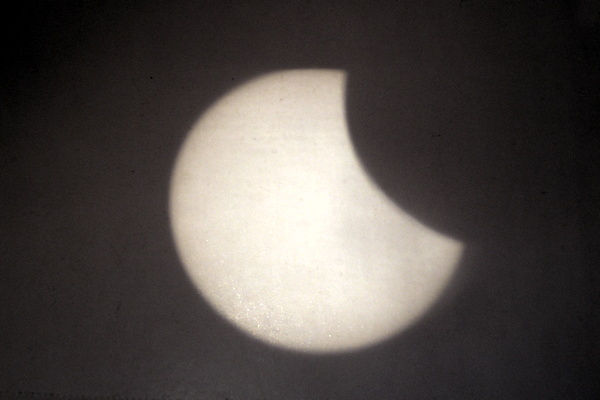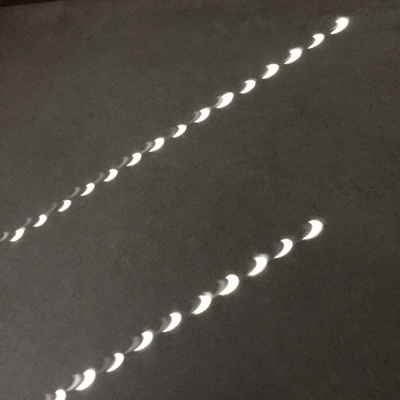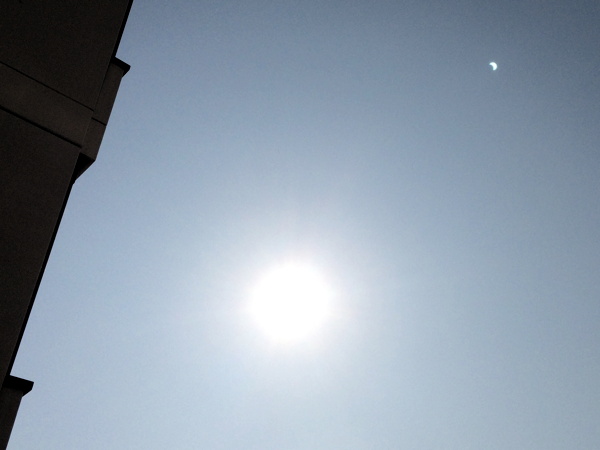After missing the previous total solar eclipse that was visible in Germany in 1999 due to excessive cloudage in Bonn I was doubly lucky today: There wasn’t a single cloud in the sky, and my timetable at school allowed me to watch the entire eclipse from start (9:29am) to finish (11:49am).
I had a pinhole camera, eclipse glasses and a sun projector at my disposal. Many students also had brought eclipse glasses and/or pinhole cameras, and the beginning of the eclipse happened just before the end of recess, so everyone was keen on taking a first look.
The sun projector proved to be a huge hit as it provided the largest picture of the sun with a diameter of about 5cm; here’s a (bad) photo I took of the projected image around 11:24am, only half an hour before the end of the eclipse:

While discussing the upcoming eclipse with my tenth grade yesterday we noticed the pattern of circles that the sun was making on the classroom floor. I realized that the holes in the blinds act like pinhole cameras and predicted that the circles would turn into crescents during the eclipse, but I think most of the students did not quite believe me until they saw it today – there were rows upon rows of tiny eclipses all over the floor and walls:

One student showed me this photo she had taken and wanted to know why the sun seemed to be whole while the eclipse was visible above and to the right:

It turns out that the sun was still so bright that that its shape was not accurate*, but the lens flare showed the eclipse – how cool is that?
Zum Abschluss noch ein paar Links auf deutsch für die geneigten Leser aus der Nachbarschaft:
Sonnenfinsternis am 11. August 1999 und Sonnenfinsternis vom 20.03.2015 (heute), Lens Flare bzw. Linsenreflexion
Besondere Erwähnung verdienen die Sonnentaler – für die gibt es keinen englischen Begriff, so weit ich weiß. Gemeint sind die Lichtflecken, die ein dichtes Blätterdach oder auch kleine Öffnungen in Rollläden/Jalousien verursachen und die heute während der Finsternis als kleine Sonnensicheln zu sehen waren. Die Entstehung beruht auf dem gleichen Prinzip wie die Bildentstehung bei einer Lochkamera.
